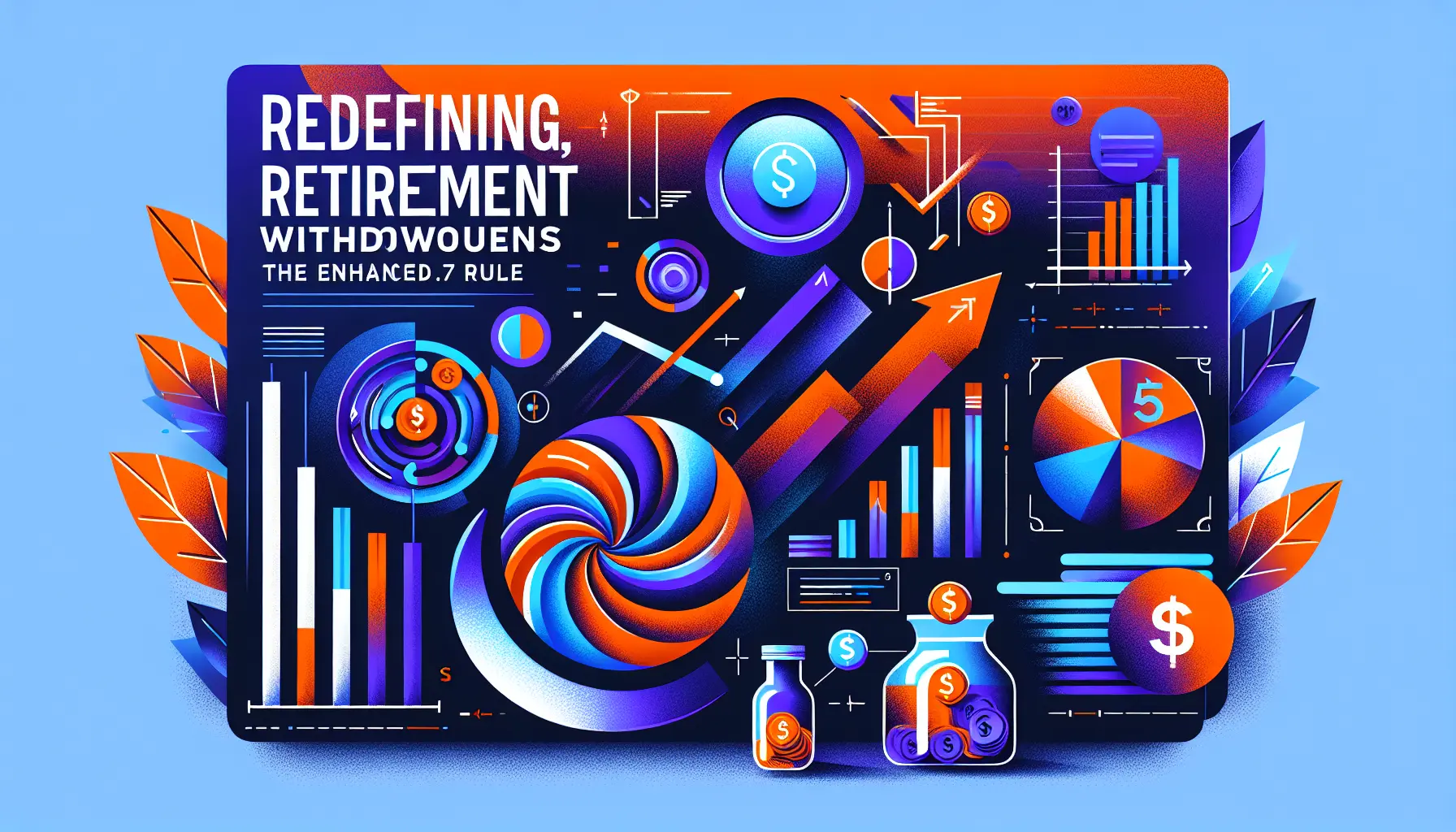Global economic turbulence and rising inflation rates have created unprecedented challenges for investors, businesses, and individuals seeking to preserve and grow their wealth. The combination of geopolitical tensions, supply chain disruptions, monetary policy shifts, and post-pandemic economic adjustments has resulted in a complex financial environment requiring adaptive strategies and careful risk management. Understanding how to navigate these challenges while protecting purchasing power has become essential for financial success in the current uncertain landscape.
Understanding Inflation’s Impact on Wealth
Inflation erodes the real value of cash holdings and fixed-income investments, making it one of the most insidious threats to long-term wealth preservation. When the cost of goods and services rises faster than investment returns, purchasing power declines even when nominal account balances increase.
Cash equivalents including savings accounts and money market funds typically offer returns below inflation rates during periods of rising prices. This negative real return means that conservative savers effectively lose money over time, highlighting the need for inflation-hedged investment strategies.
Fixed-rate debt instruments such as government bonds and corporate bonds lose value as inflation expectations rise and interest rates adjust upward. Long-term bondholders face particular risks as rising rates reduce the present value of future cash flows from these securities.
Real estate often serves as an inflation hedge because property values and rental income tend to rise with general price levels. However, rising interest rates can negatively impact real estate markets by increasing borrowing costs and reducing affordability for potential buyers.
Equity investments in companies with pricing power may provide inflation protection as these businesses can raise prices to maintain profit margins. However, companies with high fixed costs or limited pricing flexibility may struggle during inflationary periods.
Asset Diversification and Portfolio Protection
Diversification across asset classes, geographic regions, and investment strategies becomes crucial during periods of economic instability. Traditional portfolio allocation models may require adjustment to address heightened risks and changing correlations between different investments.
International diversification helps protect against country-specific risks including currency devaluation, political instability, and localized economic problems. However, global interconnectedness means that major economic disruptions can affect markets worldwide, limiting the benefits of geographic diversification.
Alternative investments including commodities, precious metals, and real assets may provide portfolio protection during inflationary periods. Gold and other precious metals have historically served as stores of value during economic uncertainty, though their prices can be volatile in the short term.
Commodity investments including energy, agricultural products, and industrial metals often benefit from inflationary environments as rising prices increase commodity values. However, commodity markets can be highly volatile and may not always move in line with general inflation trends.
Real estate investment trusts (REITs) provide exposure to real estate markets without direct property ownership while offering potential inflation protection through rental income growth and property appreciation. However, REITs can be sensitive to interest rate changes and may underperform during certain market conditions.
Private equity and venture capital investments may offer protection against inflation through ownership stakes in businesses that can adapt their pricing and operations to changing economic conditions. However, these investments typically require longer time horizons and may involve higher risks.
Income Generation and Cash Flow Management
Generating reliable income streams becomes increasingly important during inflationary periods as fixed payments lose purchasing power over time. Investors must balance current income needs with long-term wealth preservation objectives.
Dividend-paying stocks from established companies may provide growing income streams that can keep pace with inflation. Companies with strong competitive positions and pricing power are better positioned to maintain and increase dividend payments during challenging economic conditions.
Inflation-protected securities such as Treasury Inflation-Protected Securities (TIPS) adjust their principal value based on inflation measures, providing direct protection against purchasing power erosion. However, these securities may offer limited upside potential during periods of low inflation.
Variable-rate debt instruments including floating-rate loans and adjustable-rate bonds may provide income that rises with interest rates, offering some protection against inflation. However, credit risk remains a concern if economic conditions deteriorate and borrowers face difficulties.
Rental property investments can provide income streams that adjust with market conditions, as rental rates often rise with inflation and local economic growth. However, property management requirements and maintenance costs must be considered when evaluating rental investment returns.
Business ownership through direct investment or equity stakes may provide income that grows with economic expansion while offering inflation protection through business pricing flexibility. However, business investments require careful due diligence and active management consideration.
Currency and International Considerations
Currency risk becomes a significant factor during periods of global instability as exchange rates fluctuate based on relative economic conditions, monetary policies, and geopolitical events. Understanding currency dynamics helps inform international investment and hedging decisions.
Dollar-denominated investments may benefit from dollar strength during global uncertainty as investors seek safe-haven assets. However, prolonged dollar strength can negatively impact U.S. export competitiveness and emerging market investments.
Foreign currency investments including international bonds and foreign bank deposits provide diversification from domestic currency risk while potentially benefiting from favorable exchange rate movements. However, currency volatility can create significant gains or losses that may overshadow underlying investment returns.
Emerging market investments may offer higher growth potential and attractive valuations during global instability, but they also carry increased risks including political instability, currency devaluation, and capital flight during crisis periods.
Cryptocurrency investments including Bitcoin and other digital assets are increasingly viewed as alternative stores of value and inflation hedges, though their extreme volatility and regulatory uncertainty create significant risks for conservative investors.
Currency hedging strategies using financial derivatives can reduce foreign exchange risk in international investment portfolios, though hedging costs and complexity must be weighed against potential benefits.
Debt Management and Leverage Strategies
Managing debt obligations becomes critical during inflationary periods as rising interest rates increase borrowing costs while potentially creating opportunities for borrowers with fixed-rate debt to benefit from inflation.
Fixed-rate debt becomes more advantageous during inflationary periods as borrowers repay loans with depreciated currency while benefiting from stable payment obligations. Refinancing variable-rate debt to fixed rates may be beneficial when inflation expectations are rising.
Variable-rate debt carries increased risk during periods of rising interest rates as monthly payments adjust upward with rate increases. Borrowers with significant variable-rate obligations should consider refinancing options or prepare for higher payment obligations.
Debt-to-income ratios require careful monitoring during inflationary periods as rising living costs reduce disposable income available for debt service. Maintaining conservative leverage levels provides financial flexibility during economic uncertainty.
Strategic leverage using borrowed funds to invest in inflation-hedged assets may enhance returns during inflationary periods, though this approach significantly increases risk and requires careful risk management.
Mortgage strategies including refinancing decisions and prepayment considerations require evaluation of current interest rates, inflation expectations, and personal financial circumstances to optimize long-term outcomes.
Business and Career Considerations
Professional income and business revenue streams face different inflation impacts depending on industry characteristics, competitive dynamics, and pricing flexibility. Developing recession-resistant income sources becomes increasingly important during economic uncertainty.
Skill development and career advancement in high-demand fields may provide income growth that outpaces inflation while offering employment security during economic downturns. Healthcare, technology, and essential services often demonstrate greater resilience during challenging periods.
Business investment in productivity-enhancing technology and operational efficiency can help companies maintain profitability despite rising input costs and economic pressures. However, capital allocation decisions require careful analysis of return potential and financing costs.
Supply chain diversification and inventory management become critical for businesses operating in inflationary environments with supply disruptions. Companies must balance carrying costs against availability risks when managing inventory levels.
Pricing strategies require careful consideration of competitive dynamics, customer price sensitivity, and cost structures when implementing price increases to offset inflation impacts.
Contract negotiations should address inflation adjustments and escalation clauses to protect against unexpected cost increases during long-term agreements.
Risk Management and Insurance Planning
Insurance coverage requires regular review during inflationary periods as replacement costs for homes, vehicles, and other assets increase with rising prices. Adequate coverage limits help protect against financial losses that could jeopardize long-term financial security.
Life insurance needs may increase during inflationary periods as living expenses and financial obligations grow in nominal terms. However, the real cost of insurance premiums may decline if policy costs remain fixed while inflation reduces their purchasing power equivalent.
Disability insurance becomes increasingly important as inflation reduces the real value of fixed benefit payments. Policies with inflation adjustment features or cost-of-living adjustments provide better protection against purchasing power erosion.
Property insurance coverage limits should be adjusted regularly to reflect current replacement costs for homes and personal property. Underinsurance can result in significant out-of-pocket expenses following covered losses.
Liability insurance coverage remains important as legal settlements and damage awards often increase with inflation and economic growth.
Emergency fund requirements may need adjustment during inflationary periods as monthly living expenses increase, requiring larger cash reserves to maintain the same number of months of coverage.
Long-Term Planning and Adaptation
Financial planning strategies must remain flexible and adaptable as economic conditions evolve and new challenges emerge. Regular plan reviews and adjustments help ensure that strategies remain aligned with changing circumstances and objectives.
Retirement planning requires particular attention during inflationary periods as fixed pension benefits and annuity payments lose purchasing power over time. Retirement portfolios should include growth-oriented investments that can provide inflation protection over long time horizons.
Education funding strategies should consider rising education costs that often exceed general inflation rates. Investment approaches for education expenses may need to emphasize growth potential while managing timing risks.
Estate planning considerations include the impact of inflation on estate tax exemptions, asset valuations, and the real value of gifts and bequests to beneficiaries.
Tax planning strategies should address the interaction between inflation, tax brackets, and investment returns to optimize after-tax outcomes during changing economic conditions.
The key to successful financial management during inflationary and unstable periods lies in maintaining diversified strategies that can adapt to changing conditions while protecting against the most significant risks to long-term financial security.















